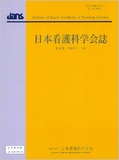Japanese
English
- 販売していません
- Abstract 文献概要
- 参考文献 Reference
要旨
目的:機能強化型訪問看護管理療養費を算定していない訪問看護事業所における訪問看護師への教育や研修も含めた在宅看取りの関連要因を明らかにする.
方法:無作為抽出した全国2,000事業所を対象に,事業所の体制,研修・教育体制,在宅看取りの地域・文化,在宅看取りの実施に関する質問紙調査を実施した.
結果:242事業所の回答を分析した.看護職の常勤換算数,24時間対応体制加算算定の有無,在宅看取りを実施する上での地域・文化的な困難で調整したロジスティック回帰分析では,管理者の在宅看取り研修受講経験(オッズ比:4.17(95%信頼区間:1.76〜9.90))と初めて在宅看取りを実践する看護師への同行訪問の頻度を増やす支援(3.12 (1.33〜7.29))が在宅看取りの実施と関連していた.
結論:管理者を対象とした在宅看取り研修や初めての看護師への同行訪問は,在宅看取りを推進する可能性がある.
Objective: To clarify the education and training-related factors associated with provision of end-of-life care by home-visit nursing agencies that did not calculate the medical expenses for function-enhanced home nursing management.
Methods: An anonymous questionnaire was administered to 2,000 randomly selected home-visit nursing agencies throughout Japan. It asked about the facility structure, training/education factors among nurses and managers, regional and cultural difficulties in implementing end-of-life care at home, and provision of end-of-life care at home.
Results: A total of 242 responses were analyzed. Logistic regression analysis was carried out, adjusting for the number of full-time equivalent nurses, the presence of an additional 24-hour response system and regional and cultural difficulties in implementing end-of-life care at home. It showed that the provision of end-of-life care at home was associated with end-of-life care training for managers (odds ratio: 4.17, 95% confidence intervals: 1.76-9.90), and support to increase the frequency of accompanied visits for nurses practicing end-of-life care at home for the first time (3.12, 1.33-7.29).
Conclusion: End-of-life care at home may be promoted by providing specific training for managers and ensuring that nurses who are practicing end-of-life care at home for the first time are accompanied.
Copyright © 2022, Japan Academy of Nursing Science. All rights reserved.


